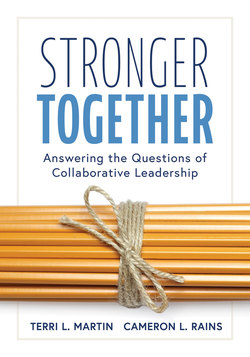Читать книгу Stronger Together - Terri L. Martin - Страница 8
На сайте Литреса книга снята с продажи.
ОглавлениеFOREWORD
By Robert J. Marzano
Stronger Together by Terri L. Martin and Cameron L. Rains is both straightforward and unique in its approach to leadership. It is straightforward in the sense that it makes the case that no one can lead effectively in isolation. Just as it takes a village to educate a child, it takes a team to lead the school that educates that child. Interestingly, this relates directly to the burgeoning field of collective efficacy. At its most basic level and as it relates to K–12 schooling, collective efficacy means that teachers and leaders in a building truly believe that they can have more of a positive impact on students if they work as an integrated team, than they can if they operate as individuals.
While this simple premise has been articulated before, albeit expressed in different ways, it has previously not been articulated in steps as concrete as those that Martin and Rains provide. They propose six questions that, when answered, allow leaders to marshal the collaborative efforts of educators in a building or district in such a way that collective efficacy is a natural byproduct.
Question 1: What kind of leader am I? There is no correct answer to this question. However, its answer should provide a leader with clear guidance on how to interact with others. Specifically, leaders should emphasize and capitalize on their own strengths.
Question 2: How can I earn trust? The answer to this question is less open ended than is the answer to the first question. More specifically, Martin and Rains demonstrate that trust is earned by demonstrating intensity, empathy, accessibility, and humility.
Question 3: How do I build teams? The answer to this question should be guided by the growing body of work on the PLC process. Specifically, leaders should assemble different teams to meet the specific needs of their schools. When doing so, they should utilize the expertise of others and ensure stakeholder representation.
Question 4: How can I help develop a vision? This question involves specific actions a leader should take. Martin and Rains recommend that leaders begin by differentiating facts from beliefs since it is beliefs that are the basis for visions. But visions must be realistic, and facts can serve to help hone visions into an attainable yet inspiring possible future. Obviously, a school’s vision should be shared by all relevant stakeholders and used by the leader to generate commitment to concrete goals that are grounded in the vision.
Question 5: How can I support teams? As before, the answer to this question should be guided by established PLC practices. These include examining common times; creating team tools; focusing on curriculum, instruction, and assessment; examining data; and monitoring progress.
Question 6: What, when, and how should I communicate? Arguably, this last question is the most important since it deals with day-to-day interactions with others. The quality of these interactions most probably has a one-to-one relationship with the quality of one’s leadership. High-quality interactions involve listening to others, sharing with others, and celebrating others.
Stronger Together not only affirms a belief held by many leaders but also provides actionable guidance for actualizing this belief.
